PRINT FEATURES
Print features are print finishing options that enhance your print media.
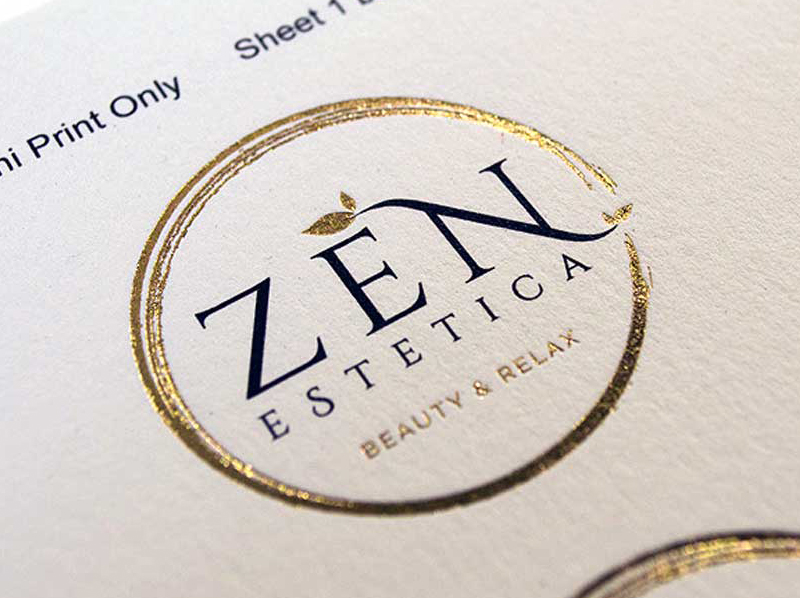
FOIL STAMPING
Foil stamping is the application of metallic and special effect foils to paper or card using an etched metal die. The die is heated to the required temperature and stamped into the paper or card stock creating the much sought after debossed foil finish.
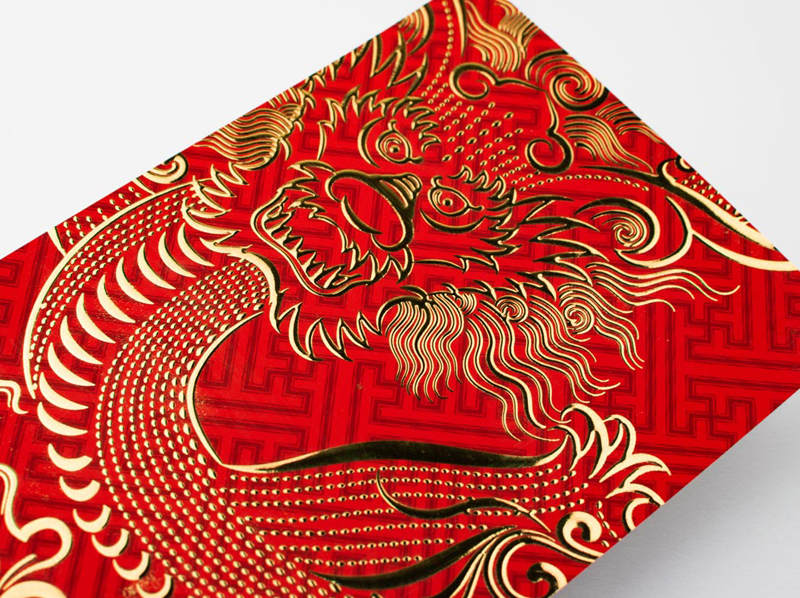
DIGITAL FOILING
Digital foiling involves fusing metallic foils to toner or UV varnish. It is ideal for short run foil jobs such as, business cards, certificates, greeting cards and invitations. Digital foil printing is also perfect for media personalisation like names on wedding invites, because it doesn't require the use of stamping die blocks.
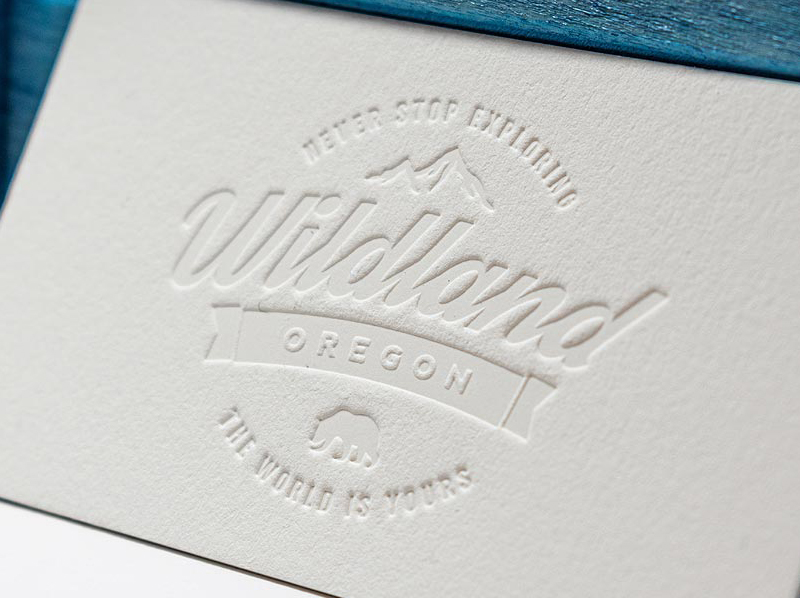
DEBOSSING
Debossing can be done blind, which is an impression in the card stock with no colour or with added foil effects.
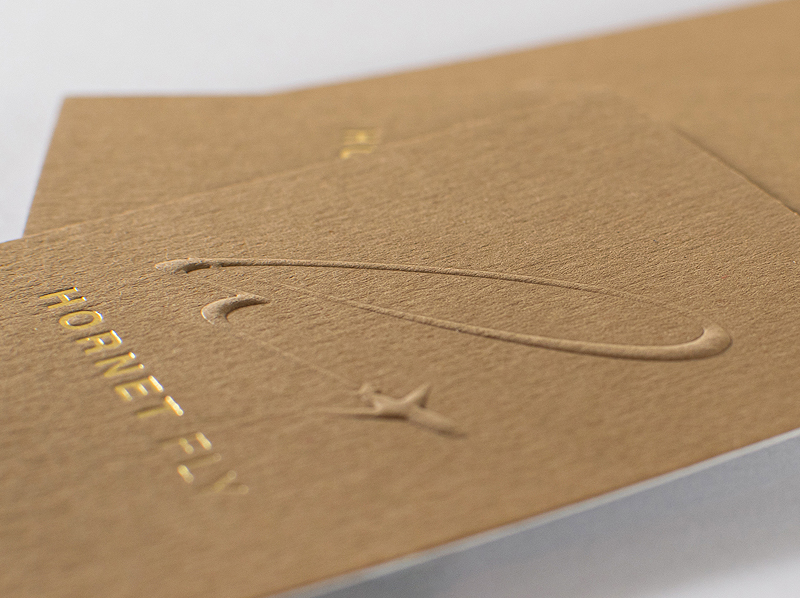
EMBOSSING
Embossing adds raised, three dimensional elements to print. We use a metal die and a counterforce to push the design elements through the card stock. The front side has the raised (embossed) finish, whilst the other side has a reversed debossed impression. Embossing can be done blind, with no colour or it can be enhanced with a foil finish.
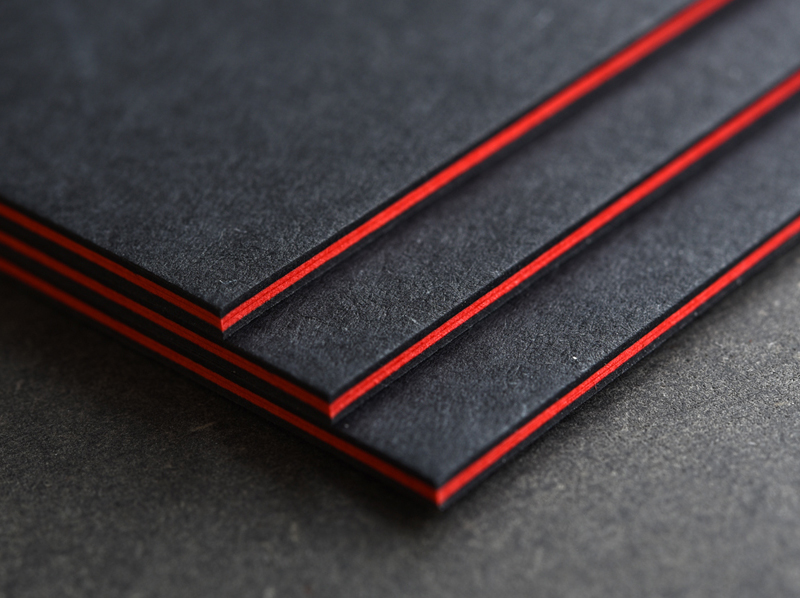
DUPLEXING
Duplexing is the bonding of two or more sheets of card stock to create a thicker sheet. It's most commonly done with dyed coloured card stocks to create duotone edges and coloured cores, however, we can also bond together laminated stocks to create thick Laminated Business Cards and Invitations.
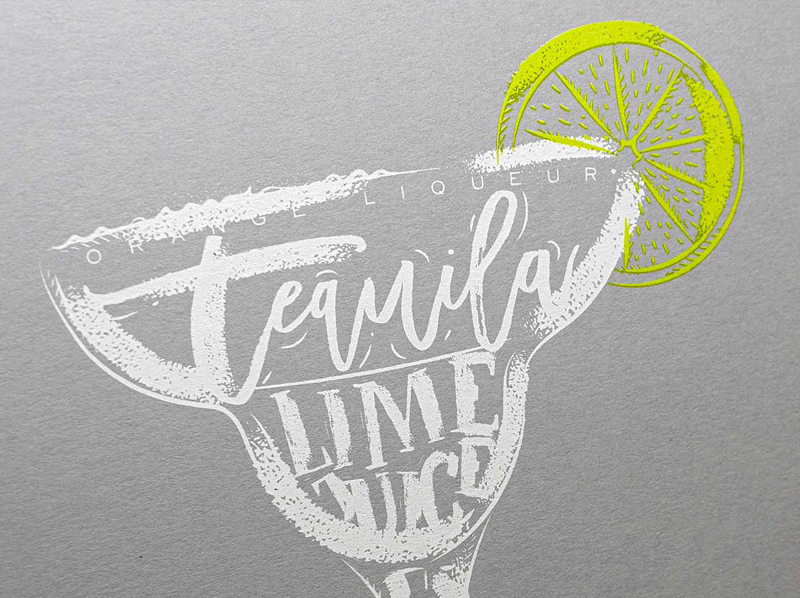
DIGITAL WHITE INK
Our digital white ink printing is well suited for printing onto coloured papers such as Colorplan and Vanguard. It can also be used to create waterslide decals and clear stickers. White ink can also be printed underneath colour, to make lighter colours more opaque on clear and coloured media.
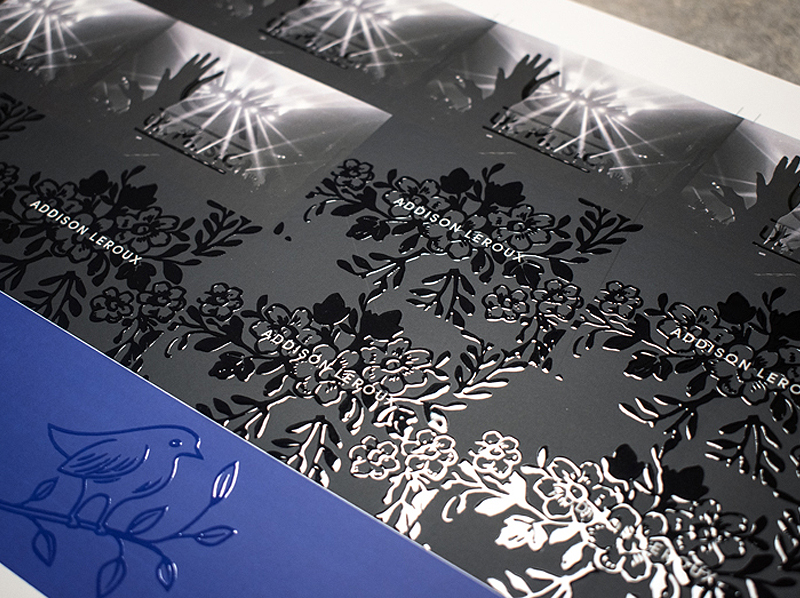
SPOT UV PRINTING
Spot UV is the application of raised UV varnish to specific areas of your design. It can be applied on top of both matt and soft touch velvet lamination, both of which, provide a striking contrast with the spot UV finish.
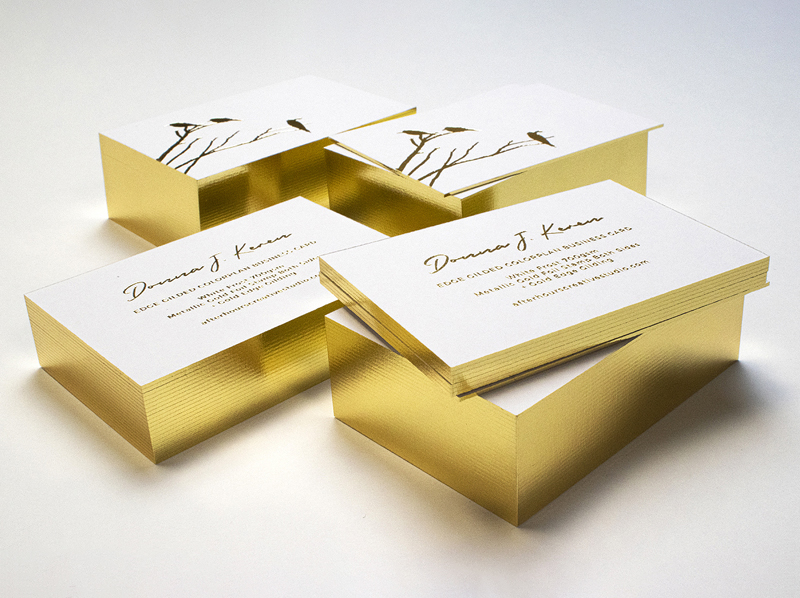
EDGE GILDING
Edge gilding is the application of metallic and special effect foils to the edges of business cards and invitations. This finish is highly specialised and is synonomous with status and prestige.
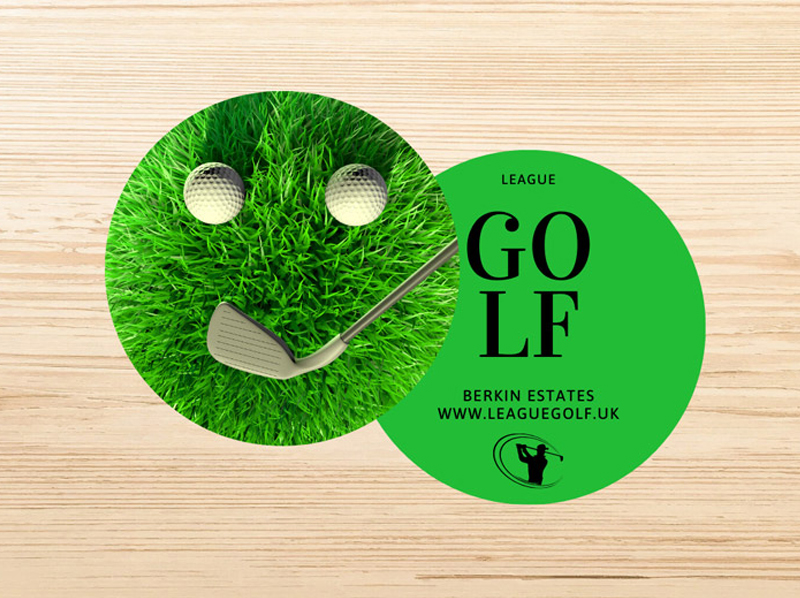
DIE CUTTING
Die cutting allows us to die cut printed designs into unique shapes. It also enables for the kiss cutting of stickers into custom shapes. Addiitionally, die cutting is also used to create multi-layered cards with cut outs in the top layer.
BASIC PRINT FEATURES
Basic print features include finishing options such as laminating, saddle stitching and folding. Typically, these are standard print finishing options that most printers offer, and are classified as basic print features that are counterparts to digital full colour printing. There are three different types of laminate options which include gloss, matt, and soft touch. Gloss lamination provides a gloss finish and can really enliven the colours of your design. Matt and soft touch lamination both have a matt finish, but soft touch velvet lamination has the added appeal of a velvet finish, often described as the skin of a peach. Saddle stitching refers to the stapling of booklets, its counterpart is perfect binding which involves gluing the pages along the spine to provide a hard edge. Another basic print feature is folding, which is mainly used for finishing of leaflets. There are several fold options including half folds, trifolds, gate folds and other custom folds.
ADVANCED PRINT FEATURES
Hoist the visibility of your print media by exploring our advanced print features such as spot UV printing, die cutting, digital foiling and digital white ink printing. Spot UV printing is the process of applying a UV varnish to specific ‘spot’ areas of your design to enhance it. Spot UV is applied on top of both matt and soft touch lamination and can be flat or with a raised finish. Digital foiling is a very cost-effective advanced print feature which can add lovely accentuations to your print media. It works by fusing metallic foils to toner which bypasses the need for foil stamping dies. This makes it very affordable for short runs with larger foil areas. Further, digital foiling works well with variable data which means you can have different designs or names in foil. A popular selection for this is wedding invitations with the recipient’s names in foil. This kind of personalisation work isn’t suitable when using traditional foil stamping due to the cost of all the foil dies that would be required. Digital white ink printing is another advanced print feature we offer at AHC. As with digital foiling, it is great for different designs and personalisation, because the process is digital. It’s a popular application for wedding invitations. We often use the gorgeous card colours in the Colorplan range and print personalised designs using white ink. The final advanced print feature we offer is die cutting. Die cutting enables us to cut print to unique shapes. Normally, this is the last stage in production, to create custom shaped business cards, invitations and swing tags and it can be combined with foiling, spot UV and white ink.
OUR SPECIALITY PRINT FEATURES
At AHC, one of our centralized specialties is working with creative and unique papers. With our 10+ years in business, we have learnt a lot about the papers we use and have fine-tuned our in-house finishing skills by working with these papers on a daily basis. Our speciality print features include finishing options such as foil edge gilding, duplexing and foil stamping.
Edge Gilding entails sanding the edges of business cards and invitations to apply metallic and special effect foils to the edges. It is a highly specialised speciality print feature that few print companies offer in-house. The most popular foil edge colours are gold, silver, rose gold, copper and holographic rainbow silver. Over the years we have narrowed down which foils work best, the most effective mixes for adhesives and which techniques create the brightest and shiniest foil edges. Although the general process is the same, each company has their own techniques, which often remain closely guarded secrets due to the time involved in mastering the craft. Duplexing often goes hand in hand with edge gilding due to its ability to create thick card that is ideal for showing off foil edges. Duplexing is relatively simple, because it’s bonding two sheets together. We are often asked to mix and match stocks for duplexing, which can present issues if you are not familiar with which type of adhesive to use for specific stocks. It is also important to ensure that the weights of the boards we duplex are similar, in order prevent stock from bowing. Duplexing is often used to affix coloured card stocks such as Colorplan, Senses and Vanguard to craft beautiful edge colour combinations, however, it can be applied to laminated sheets as well.